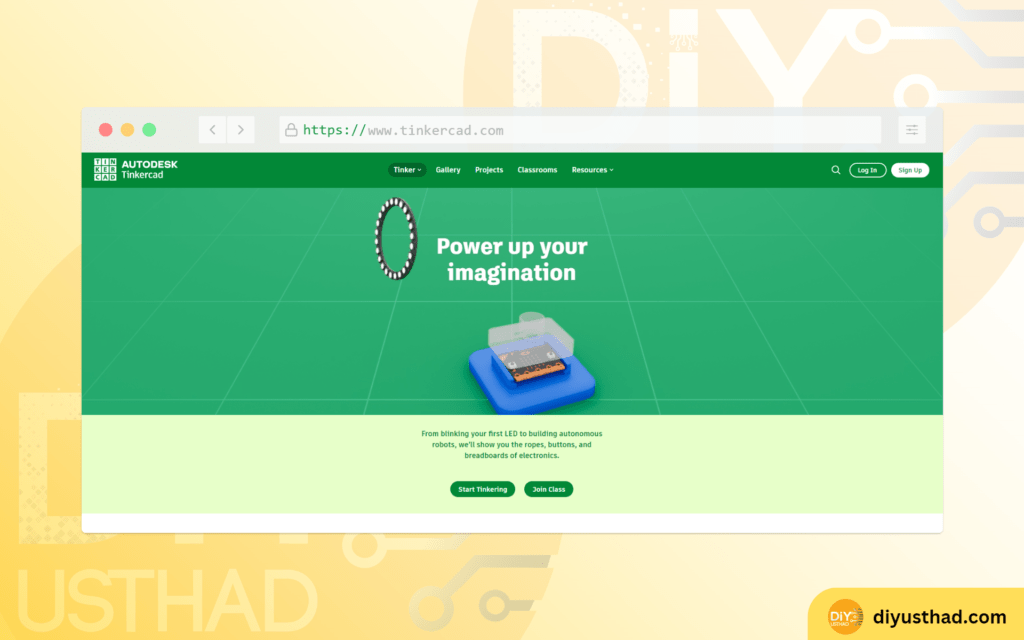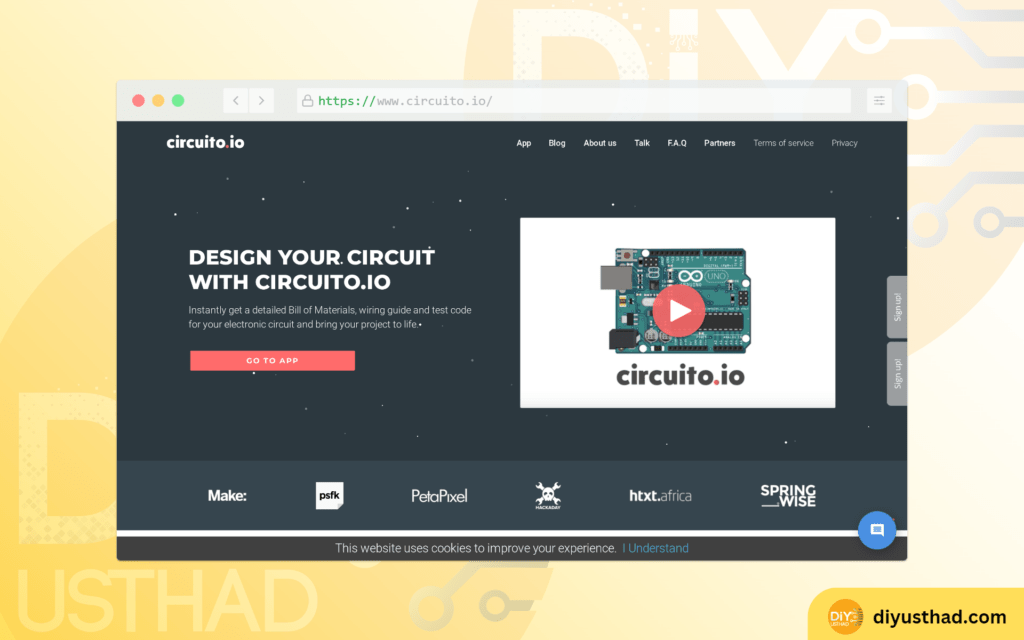Arduino is a popular platform for creating electronics projects, but sometimes you may not have access to the hardware or you may want to test your code before uploading it to the board. That’s where Arduino online simulators come in handy. These are web-based tools that let you design and run virtual circuits with Arduino and other components, without the need for any physical devices.
In this post, we will review the top 3 Arduino online simulators that you can use for your projects. We will compare their features, advantages, and disadvantages, and help you choose the best one for your needs.
1. Wokwi
Wokwi is an online ESP32, STM32, and Arduino simulator that features a large collection of realistic components, such as LEDs, displays, sensors, motors, and more. You can easily drag and drop components on the breadboard, connect them with wires, and write code using the built-in code editor. Wokwi supports both Arduino C/C++ and MicroPython languages, and you can also use code libraries and examples from the Arduino IDE.


Wokwi has a friendly and active community of makers who share their projects and help each other on Discord and Facebook. You can also browse hundreds of simulation projects created by other users on the Wokwi website https://wokwi.com/, and learn from them or remix them for your own purposes.
Advantages
- It’s free to use and doesn’t require registration or installation.
- It has a fast and accurate simulation engine that runs in your browser.
- It supports many popular boards, such as Arduino Uno, Mega, Nano, ESP32, Raspberry Pi Pico, etc.
- It has a rich library of components, including OLED displays, LED matrices, LCDs, keypads, servos, potentiometers, etc.
- It has a user-friendly interface that lets you zoom in and out, rotate components, change colors, etc.
- It has a code editor that supports syntax highlighting, auto-completion, error checking, etc.
- It has a built-in serial monitor that lets you communicate with your virtual device.
- It has a power votes system that lets you decide what features are important for you and support their development.
Disadvantages
- It doesn’t support analog inputs or PWM outputs yet (but they are planned for the future).
- It doesn’t have a schematic view or a PCB layout tool (but you can export your circuit as an SVG file).
- It doesn’t have a debugger or a logic analyzer (but you can use print statements or LEDs to debug your code).
2. Tinkercad
Tinkercad is an online platform for 3D design, electronics simulation, and coding. You can use it to create virtual circuits with Arduino and other electronic components (even a lemon), and program them using code blocks or text. Tinkercad supports both Arduino C/C++ and Python languages, and you can also import code from the Arduino IDE.


Tinkercad has a large community of users who share their designs and tutorials on the website https://www.tinkercad.com/circuits. You can also join classes or create your own to teach or learn electronics with Tinkercad. Tinkercad also offers resources such as official guides, Python coding examples , and lesson plans to help you get started.
Advantages
- It’s free to use and doesn’t require installation (but you need to register with an email or a social media account).
- It has a realistic simulation engine that shows how components respond virtually before wiring your real-life circuit.
- It supports many common boards, such as Arduino Uno, Mega, Nano, ESP32, micro:bit, etc.
- It has a wide range of components, including LEDs, resistors, capacitors, transistors, switches, sensors, etc.
- It has a simple interface that lets you place and wire components easily.
- It has a code editor that supports both code blocks and text modes.
- It has a serial monitor that lets you communicate with your virtual device.
Disadvantages
- It can be slow or laggy sometimes due to network issues or browser limitations.
- It doesn’t support some advanced features such as interrupts or timers yet (but they may be added in the future).
- It doesn’t have a schematic view or a PCB layout tool (but you can export your circuit as an image file).
- It doesn’t have a debugger or a logic analyzer (but you can use print statements or LEDs to debug your code).
3. Circuito.io
Circuito.io simplifies the process of designing and simulating Arduino projects through its user-friendly interface and extensive online library. With Circuito.io, you can select the components you need, and the simulator will automatically generate the circuit diagram, code, and even a virtual representation of your project. This streamlined approach makes it an ideal choice for beginners who want to quickly visualize their ideas without diving into intricate details.


Advantages
- User-Friendly Interface: Simplifies the process of designing and simulating Arduino projects.
- Automatic Component Selection: Automatically selects necessary components based on project description.
- Circuit Diagram and Code Generation: Generates comprehensive circuit diagram and Arduino code.
- Virtual Project Visualization: Provides a virtual representation of the project to visualize its appearance and interaction.
- Integration with Online Suppliers: Conveniently integrates with online suppliers for direct component purchase.
Disadvantages
- Limited Customization: May lack flexibility and customization options for advanced users.
- Reduced Complexity: Well-suited for simpler projects and beginner-level prototyping.
- Dependency on Online Connectivity: Requires stable internet connection for effective use.
Editor’s Choice:
Among the top 3 Arduino online simulators reviewed, Wokwi stands out as the Editor’s Choice. It offers a comprehensive set of features, a user-friendly interface, and a vibrant community of makers. The simulator provides a fast and accurate simulation engine, supporting various popular boards and a rich library of components. The code editor with syntax highlighting and error checking enhances the programming experience. Additionally, Wokwi’s power votes system empowers users to influence the development of essential features. Although lacking analog inputs and PWM outputs currently, these additions are planned for the future. While lacking a schematic view or PCB layout tool, users can export their circuits as SVG files for further analysis. Wokwi impresses with its functionality, ease of use, and active community support.
Conclusion:
Arduino online simulators offer a convenient solution for designing and testing electronics projects without physical hardware. These simulators provide a range of features, including realistic component libraries, code editors, and simulation engines. While each simulator reviewed has its own advantages and disadvantages, Wokwi emerges as the top choice due to its extensive capabilities, user-friendly interface, and strong community support. Whether you are a beginner looking to visualize ideas quickly with Circuito.io or prefer the versatility of Tinkercad’s 3D design integration, Wokwi provides a well-rounded experience with its diverse board support and comprehensive component library. Whichever simulator you choose, online Arduino simulators are valuable tools for prototyping and experimenting with electronics projects.

